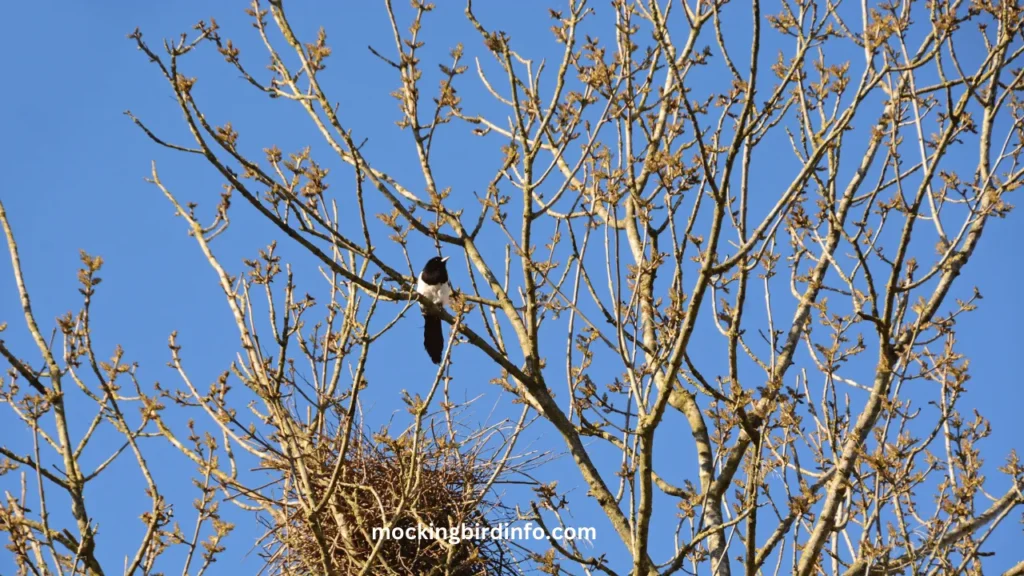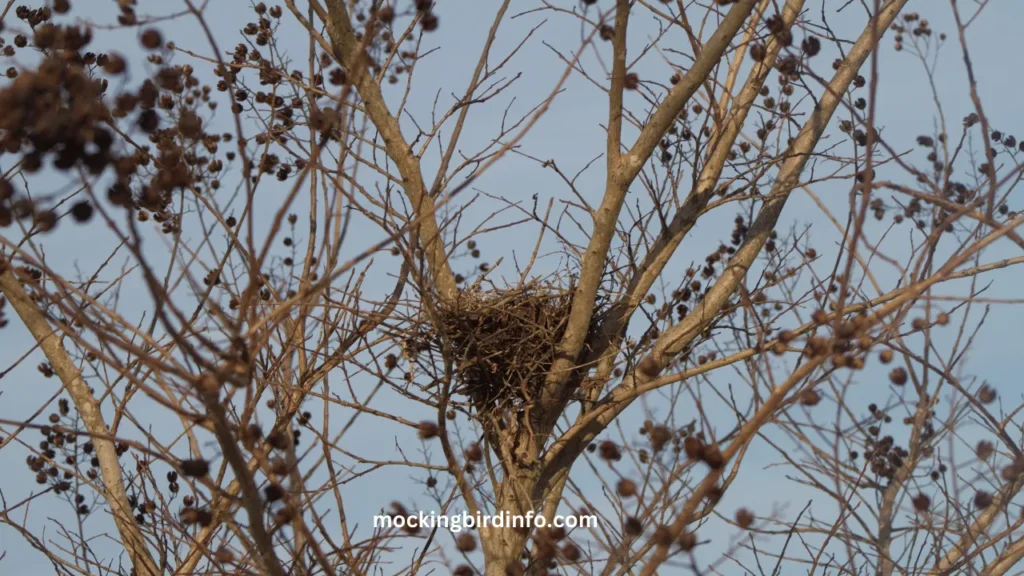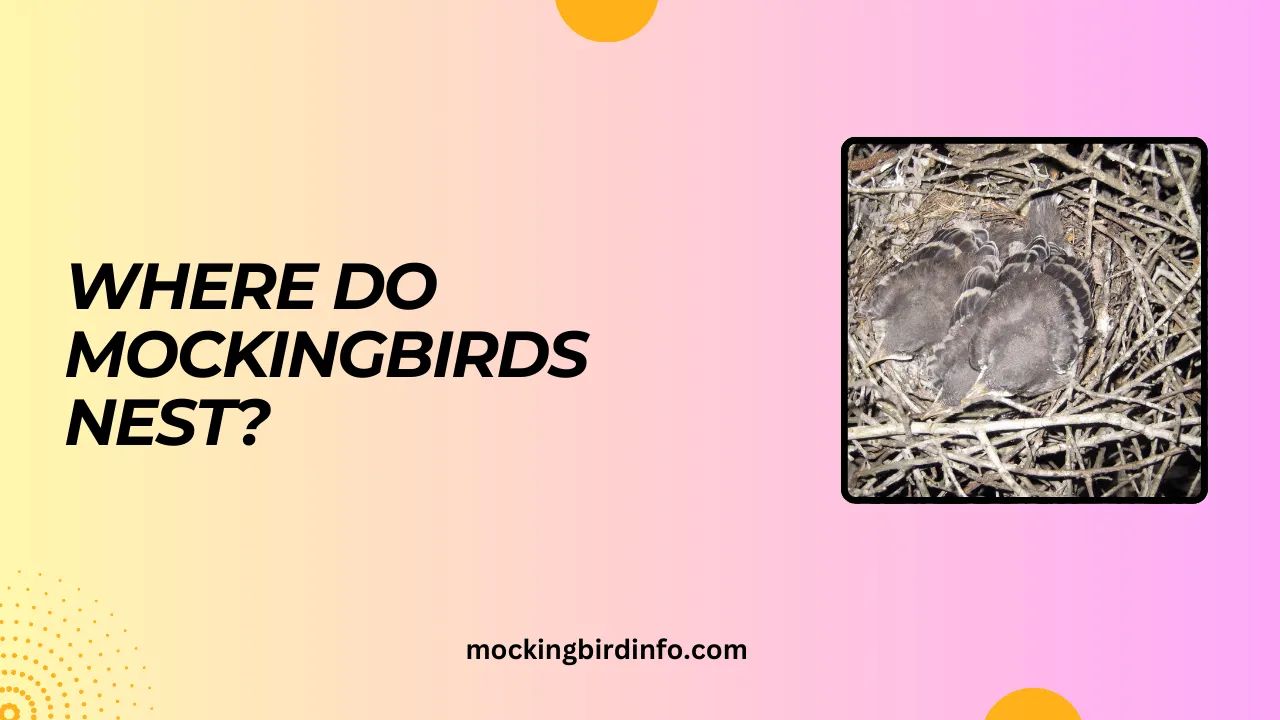Mockingbirds are famous for their captivating songs, often mimicking the calls of other birds and everyday sounds. But their vocal talents aren’t their only remarkable trait—mockingbirds are also skillful and strategic nest builders.
Understanding where mockingbirds nest reveals a lot about their ability to adapt and thrive, whether in the wild or within urban settings. Their nesting habits, determined by a mix of instinct and adaptability, showcase how they ensure the safety of their young.
Exploring the nesting behavior of mockingbirds is more than just a scientific pursuit; it’s a window into their survival strategies and interactions with the environment. Whether you’re a bird enthusiast, a gardener looking to attract wildlife, or simply curious about the natural world around you, understanding these nesting habits adds depth to your appreciation for these birds.
The choices mockingbirds make for their nesting sites are intricate, reflecting considerations for safety, comfort, and proximity to resources. In this article, we’ll journey through the factors influencing nest site selection, the materials and methods they use for constructing their nests, and how they care for and defend their young.
By the end, you’ll have a comprehensive view of how these birds approach the task of nesting, from site selection to fledging.

Contents
- 1 Factors Influencing Nest Site Selection
- 2 Nest Construction
- 3 Breeding Cycle
- 4 Nest Defense
- 5 Conclusion
- 6 FAQs
- 6.1 1. Where do mockingbirds usually build their nests?
- 6.2 2. How high do mockingbirds place their nests?
- 6.3 3. What materials do mockingbirds use for their nests?
- 6.4 4. What is the incubation period for mockingbird eggs?
- 6.5 5. Do both mockingbird parents care for the eggs?
- 6.6 6. Are mockingbirds aggressive around their nests?
Factors Influencing Nest Site Selection
Predation Risk: One of the top priorities for mockingbirds when selecting a nest site is minimizing the risk of predation. They often choose areas with dense vegetation, such as thorny bushes and low-hanging trees, to make it harder for predators to approach undetected.
These plants provide both camouflage and a physical barrier against potential threats like cats, snakes, and larger birds. Mockingbirds have been known to prefer spiny or thick bushes such as hawthorn and rose bushes because they provide added security.
Habitat Availability: Mockingbirds are incredibly adaptable in choosing where to nest. They can be found in various environments, from woodlands and scrublands to suburban backyards and city parks.
The availability of suitable nesting sites, such as dense shrubs or trees with broad leaves, can influence their decision. Urban areas can provide unique nesting opportunities like hedgerows, fence lines, and even roof eaves, allowing mockingbirds to thrive in both natural and human-modified environments.
Human Disturbance: While mockingbirds are known for their ability to adapt to human presence, they do factor in human activity levels when choosing a nest site. In areas with high foot traffic or loud noises, such as busy roads or playgrounds, they may avoid nesting to minimize the risk of disruption.
However, in quieter neighborhoods or less trafficked yards, mockingbirds may build nests surprisingly close to human structures like porches, window ledges, and garden trellises.
Nest Construction
Materials Used: The materials mockingbirds use for nest construction reflect their resourcefulness. The outer structure is often built with twigs, small sticks, and sturdy stems to create a durable base.
The interior is carefully lined with softer materials like grass, feathers, leaves, and even artificial items such as yarn or pieces of cloth. This soft lining helps cushion the eggs and provide warmth during the incubation period.
Nest Structure: A mockingbird nest is typically cup-shaped, providing a snug and secure space for the eggs and nestlings. The design starts with an outer frame made of more rigid materials for structural integrity, followed by layers of finer materials to create a comfortable inner lining. This combination ensures that the nest can withstand wind and rain, protecting the young inside.
Placement and Height: The height of a mockingbird’s nest can vary, but it is usually placed between 3 and 10 feet above the ground. This range strikes a balance between being high enough to avoid ground-based predators and low enough to provide ease of access for the parents.
Nest placement can include tree forks, dense shrubs, and even crevices in buildings. In urban areas, they sometimes place nests on balconies, mailboxes, or other man-made structures that offer sufficient shelter and safety.

Breeding Cycle
Mating Behavior: The breeding cycle of mockingbirds begins with an elaborate mating ritual. Males sing a repertoire of songs to attract a female’s attention, often repeating sequences from other bird calls and even man-made noises.
Once a mate is interested, the male may engage in courtship displays, which can include wing flapping and mock nest building. This behavior demonstrates his capability to help with nest building and future parenting.
Egg Laying and Incubation: Female mockingbirds lay 2 to 6 eggs, which are small, oval-shaped, and have a light blue or greenish color with speckles. The incubation period lasts approximately 12 to 14 days, during which the mother spends most of her time keeping the eggs warm. The male supports by guarding the territory, singing to ward off intruders, and occasionally feeding the female.
Fledging Process: Once the eggs hatch, the newborns are helpless and featherless, relying entirely on their parents for warmth and food. Both parents are involved in feeding the chicks, providing them with a diet rich in insects and berries to promote healthy growth.
The fledging period lasts about 10 to 15 days, after which the chicks start to leave the nest. This phase is crucial as they begin to explore the surroundings, learning to fly and forage under the vigilant care of their parents.
Nest Defense
Parental Care: Mockingbirds are famously defensive of their nests. Both males and females exhibit aggressive behaviors when they sense a threat. They will dive at intruders, flap their wings, and make sharp calls to warn them off.
This behavior is not limited to predators; even humans who come too close to a nest may experience this protective response.
Distraction Techniques: Mockingbirds have a unique way of protecting their young through distraction displays. When they detect a predator nearby, they may perform sudden movements, fly erratically, or make loud calls to divert attention away from the nest.
These tactics confuse and lead potential threats away from the vulnerable young, showcasing the bird’s cunning in defending its offspring.
Conclusion
Mockingbirds, with their unique blend of vocal talent and parental dedication, highlight the intricate balance of survival in the avian world. Their nest site selection, construction, and vigilant defense showcase their strategic thinking and adaptability.
From choosing spots that balance safety and accessibility to fiercely defending their young with distraction displays, these birds embody a remarkable combination of instinct and intelligence.By fostering a better understanding of mockingbird nesting habits, we gain insights into how these birds interact with their environment and the challenges they face.
Conservation efforts that protect natural habitats and encourage the growth of native plants can go a long way in supporting these resilient birds. Whether in your backyard or in the wild, acknowledging the needs of mockingbirds helps create a harmonious relationship with nature.
FAQs
1. Where do mockingbirds usually build their nests?
Mockingbirds often nest in dense shrubs, low-hanging trees, and sometimes on man-made structures like fences and balconies.
2. How high do mockingbirds place their nests?
Mockingbirds typically build their nests 3 to 10 feet off the ground, striking a balance between protection from ground predators and ease of access.
3. What materials do mockingbirds use for their nests?
Their nests are made of twigs, grass, leaves, and sometimes include man-made items like yarn or cloth for added comfort.
4. What is the incubation period for mockingbird eggs?
The incubation period lasts around 12 to 14 days, during which the female keeps the eggs warm.
5. Do both mockingbird parents care for the eggs?
Yes, the female incubates the eggs, while the male guards the nest and may bring food to the female.
6. Are mockingbirds aggressive around their nests?
Mockingbirds are known for their protective nature, attacking any perceived threat that comes near their nest.








